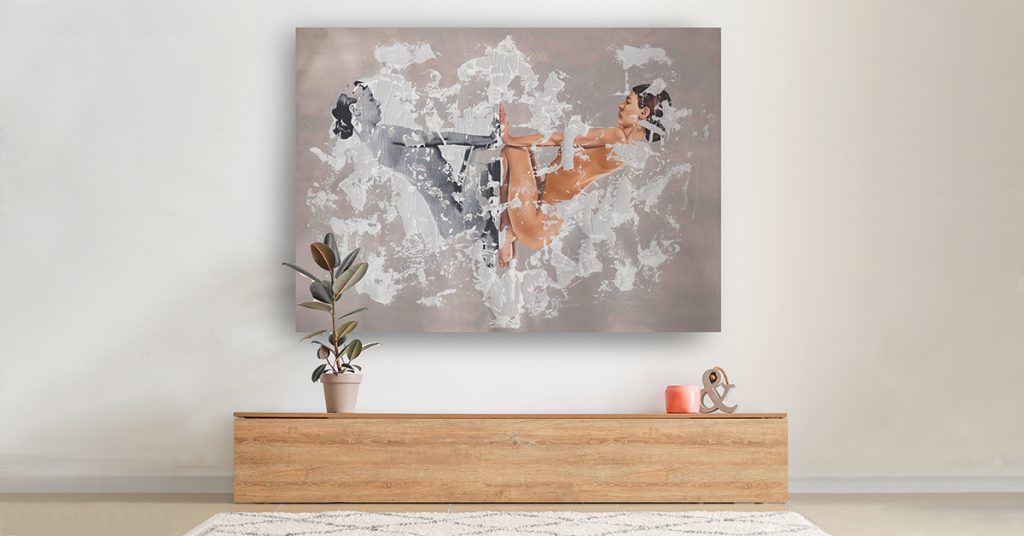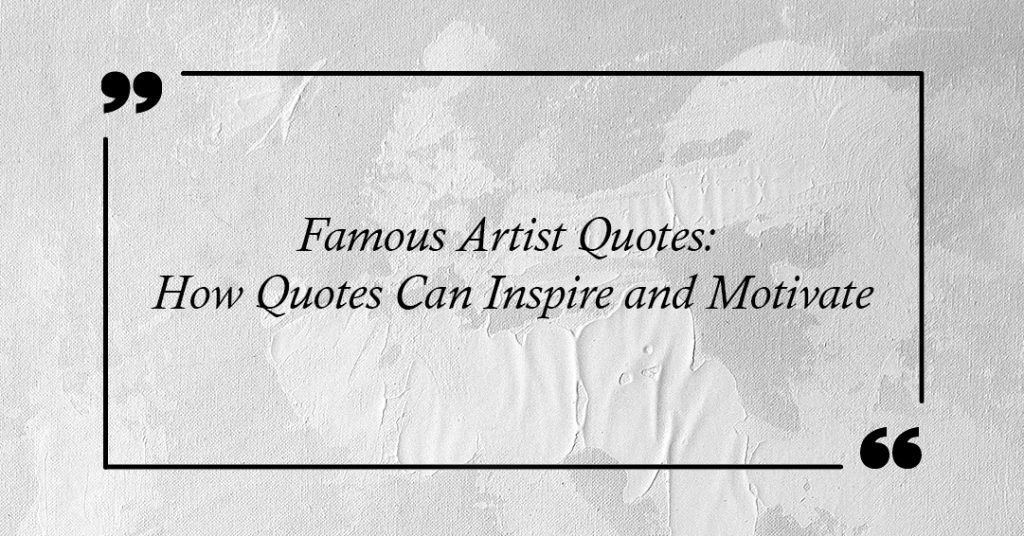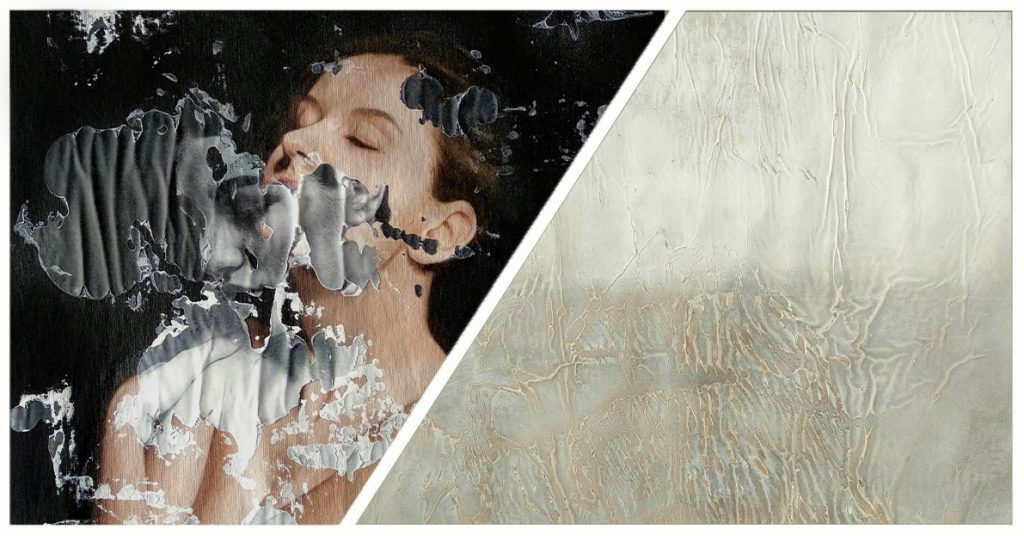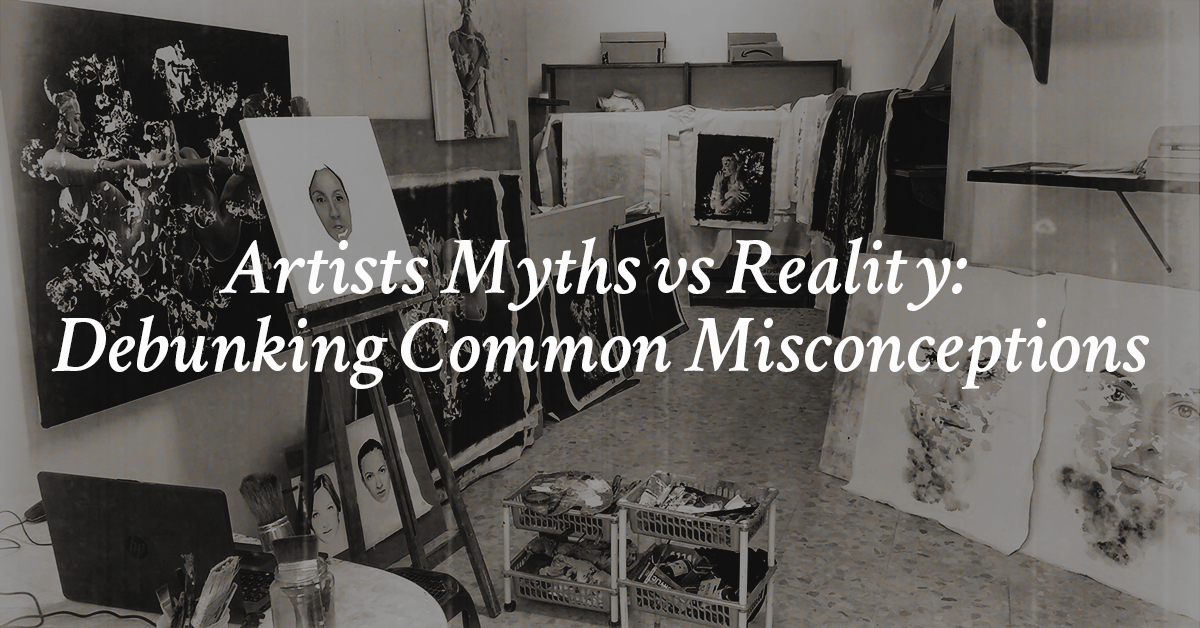
- Introduction
- Artist Myth #1: The Baby Genius Myth
- Artist Myth #2: The Tortured Artist Myth
- Artist Myth #3: The Bohemian Artist Myth
- Artist Myth #4: The Starving Artist Myth
- Artist Myth #5: The Isolated Artist Myth
- Artist Myth #6: The Myth of the Full-Time Creative Artist
- Artist Myth #7: The Mad Artist Myth
- Artist Myth #8: Artists Only Create Art for Themselves
- Artist Myth #9: Artists only work in one medium
- Artist Myth #10: Glamorous artists´s life
- Famous artists who have debunked myths about the art world
- The Harmful Impact of Artists Myths
- Conclusion
Introduction
Artists are often viewed as enigmatic, misunderstood individuals who lead unconventional lifestyles. Unfortunately, these stereotypes have led to numerous myths about the creative profession. In reality, being an artist is a diverse and multifaceted occupation that requires hard work, dedication, and skill. In this article, we will explore some of the most prevalent artists myths and debunk them with the realities of the profession.
Artist Myth #1: The Baby Genius Myth
Throughout history, there has been a common belief that artists are born with natural talent. This myth implies that artistic ability is innate, and if you don’t possess this talent from birth, then you will never be able to develop it. While some individuals may have a natural inclination towards art, this belief undermines the hard work and dedication that artists put into their craft. It also overlooks the fact that artistic skills can be learned and developed over time. Now. we will delve into the common belief that artists are born with natural talent and explore both the myths and realities surrounding this belief.
Myth vs Reality
Myth: Artists are born with natural talent
One of the most pervasive artists myths is that they are born with an innate talent that sets them apart from the rest of us. This misconception suggests that artists don’t have to work hard to develop their skills and that their talent is a gift that cannot be taught or learned.
Reality: Artistic talent can be learned and developed
While it’s true that some people may have a natural inclination towards art, artistic talent is a skill that can be learned and developed with practice and dedication. Artists must spend countless hours honing their craft and experimenting with different techniques to improve their skills. It’s also worth noting that what we perceive as “natural talent” is often the result of years of hard work and practice.
Artist Myth #2: The Tortured Artist Myth
The Tortured Artist Myth is a belief that artists must suffer in order to create great art. This myth suggests that artists are more likely to create their best work when they are in a state of emotional turmoil or mental illness. However, this belief is not necessarily true. While some artists may draw inspiration from their personal experiences, many others find inspiration in a variety of sources, including nature, music, literature, and other forms of art.
Myth vs Reality
Myth: Great art requires great suffering
This is a myth that has been perpetuated for years. While some artists may draw inspiration from their personal experiences, many others find inspiration in a variety of sources, including nature, music, literature, and other forms of art. In fact, some artists may even find inspiration in happy and joyful experiences. Therefore, it is important to recognize that great art does not necessarily require great suffering.
Reality: Inspiration can come from a variety of sources
Artists can find inspiration in a variety of sources, including their personal experiences, nature, music, literature, and other forms of art. Some artists may even find inspiration in happy and joyful experiences. Therefore, it is important to recognize that inspiration can come from a variety of sources, and that great art does not necessarily require great suffering.
Artist Myth #3: The Bohemian Artist Myth
Bohemian Artists have long been romanticized in popular culture as unconventional, free-spirited individuals who reject societal norms and live their lives fully dedicated to their art. This belief, commonly referred to as the Bohemian Artist Myth, has led many to view artists as aloof, untamed, and outside of the mainstream.
Myth vs Reality
Myth: Artists must live a bohemian lifestyle
The myth of the Bohemian Artist implies that these individuals live a carefree and adventurous lifestyle, free from the constraints of everyday life. This notion suggests that Bohemian Artists are immune to the struggles that most people face, such as financial instability, relationships, and other responsibilities. However, the reality is that most artists face the same challenges as everyone else, such as paying rent, making ends meet, and balancing their creative endeavors with everyday life. While it is true that artists often live unconventional lives, they still face the same struggles as anyone else.
Reality: Artists are Dedicated to Their Craft
Despite the romanticized image of Bohemian Artists, the reality is that most artists are dedicated to their craft and work tirelessly to perfect their skills. They may not conform to societal norms, but they do not live carefree lives. Artists are driven individuals who devote a significant amount of time, effort, and resources to their art. They often face criticism, rejection, and other setbacks, but they remain dedicated to their craft, continually striving to improve their skills and express their creativity.
Artist Myth #4: The Starving Artist Myth
There is a common myth that artists are destined to live a life of poverty and struggle, barely able to make ends meet. This belief often portrays artists as living on the fringes of society, unable to make a decent living from their work. However, the reality of the financial situation for artists is much more nuanced. While it is true that many artists face financial challenges, there are also many successful artists who are able to make a living from their craft.
Myth vs Reality
Myth: Artists don’t make money
Another common myth about artists is that they are struggling to make ends meet and that their work is undervalued by society. This misconception suggests that being an artist is not a viable career option and that artists are destined to be impoverished and unrecognized.
Reality: Artists can make a living and be successful
While it’s true that some artists may struggle financially, there are many successful artists who make a living from their work. From freelance illustrators to fine artists who sell their work for thousands of dollars, there are a variety of ways that artists can earn money from their craft. However, like any profession, success as an artist requires hard work, dedication, and business savvy.
Artist Myth #5: The Isolated Artist Myth
The idea that artists are solitary individuals is a common myth that has been perpetuated for years. Some people believe that artists prefer to work alone and that they are introverted, getting energy from being alone all the time. However, this is not necessarily true. While some artists may prefer to work alone, many others thrive in collaborative environments. In fact, an artist’s network can be critical to their success, and artists who come up together tend to make a larger splash in the art market than artists who attempt to go it alone. Additionally, loneliness is an industry hazard for fine artists, so having a network of people who can understand the ups and downs of the profession can be imperative for success as an artist.
Myth vs Reality
Myth: Artists are solitary individuals
Another prevalent myth about artists is that they are lone wolves who work in isolation. This misconception suggests that artists don’t collaborate with others and that they don’t need anyone else to create their work.
Reality: Collaboration is key to artistic success
While there may be some artists who prefer to work alone, collaboration is an essential part of many artistic practices. From musicians who work together to create a new album to visual artists who collaborate on large-scale installations, working with others can bring new perspectives and ideas to the creative process.
Artist Myth #6: The Myth of the Full-Time Creative Artist
There is a common myth that artists are constantly inspired and that their creativity flows effortlessly at all times. This belief portrays artists as having a constant stream of innovative ideas and being able to produce their best work without much effort. However, this myth undermines the challenges that artists face in the creative process. Inspiration can be fleeting, and artists often have to work hard to find the motivation and inspiration needed to create their best work.
Myth vs Reality
Myth: Artists are always inspired
Another common myth about artists is that they are constantly inspired and that their creative energy never wanes. This misconception suggests that artists are able to produce high-quality work effortlessly and that they never experience creative blocks or burnout.
Reality: Inspiration can be fleeting, and discipline is key
While inspiration is certainly an important part of the creative process, it can be fleeting, and artists must rely on discipline and hard work to produce their best work. Many artists experience creative blocks or periods of low motivation, and it’s important for them to find ways to overcome these challenges and continue creating.
Artist Myth #7: The Mad Artist Myth
The belief of the “mad artist” is a common myth that has been perpetuated throughout history. The idea suggests that great artists are often mentally unstable and derive their creativity from their madness. However, this belief is far from the reality of most artists’ lives.
Myth vs Reality
Myth: The Mad Artist
The myth of the “mad artist” suggests that artists must be mentally unstable to be creative. This myth has been popularized through depictions of artists such as Vincent van Gogh, who was known to have suffered from mental illness. The idea is that artists’ suffering and mental instability fuel their creativity and lead to great works of art.
Reality: Mental Illness and Creativity
While it is true that some artists have suffered from mental illness, it is not a requirement for creativity. Mental illness is a serious condition that affects millions of people worldwide, and it is not something to be romanticized or glorified. Moreover, there is no scientific evidence to support the idea that mental illness is necessary for creativity. In fact, many artists have created their best works during periods of stability and happiness in their lives.
Artist Myth #8: Artists Only Create Art for Themselves
The myth that artists only create art for themselves is a common misconception. While it is true that some artists create art for personal reasons, many others create art for a variety of reasons, including to make a living, to communicate a message, or to evoke an emotional response in their audience. In fact, many artists create art specifically for their audience, taking into account their tastes and preferences. This is especially true for commissioned works, where the artist is creating a piece of art for a specific client or purpose. Therefore, it is important to recognize that artists create art for a variety of reasons, and not just for themselves.
Myth vs Reality
Myth: Artists only create for themselves
Another common myth about artists is that they only create art for themselves and that they don’t care about their audience. This misconception suggests that artists are self-absorbed and that they don’t consider the opinions or experiences of others.
Reality: Artists create for a variety of reasons and audiences
While some artists may create art primarily for themselves, many artists create work with a specific audience or purpose in mind. For example, illustrators create images for books, magazines, and advertisements, while designers create products and experiences for consumers. Artists also create work that is intended to provoke a reaction or start a conversation, which can lead to meaningful engagement with their audience.
Artist Myth #9: Artists only work in one medium
The myth that artists only work in one medium is not true. While some artists may specialize in a particular medium, many others work in multiple mediums, experimenting with different materials and techniques to create their art. In fact, some artists may even combine different mediums in a single piece of art. The choice of medium often depends on the artist’s creative vision and the message they want to convey through their art. Therefore, it is important to recognize that artists are not limited to a single medium and that their creativity can take many different forms.
Myth vs Reality
Myth: Artists only work in one medium
Another myth about artists is that they only work in one medium or style. This misconception suggests that artists are limited in their creative expression and that they are unable to explore new ideas or techniques.
Reality: Many artists work in multiple mediums
In reality, many artists work in a variety of mediums and styles throughout their career. For example, painters may also experiment with sculpture or photography, while musicians may also work with digital media or visual art. Working in different mediums can lead to new opportunities for creative expression and can help artists develop a more diverse skill set.
Artist Myth #10: Glamorous artists´s life
There is a common myth that the life of an artist is glamorous, full of creative freedom, and devoid of the mundane aspects of everyday life. This belief often portrays artists as living in a constant state of inspiration, free from the constraints of a typical 9-to-5 job. However, the reality of the artistic lifestyle is much more complex. While artists do have the freedom to express themselves creatively, they must also navigate the challenges of making a living, marketing their work, and dealing with the highs and lows of creative inspiration
Myth vs Reality
Myth: The life of an artist is glamorous
Finally, another myth about artists is that their lives are glamorous and full of exciting events and experiences. This misconception suggests that artists lead carefree, bohemian lifestyles and that they are free from the mundane concerns of everyday life.
Reality: Being an artist is hard work
In reality, being an artist is hard work that requires dedication and perseverance. Artists must balance their creative pursuits with the practical aspects of running a business, such as marketing their work and managing finances. While there may be moments of excitement and glamour, the life of an artist is often marked by hard work and sacrifice.
Famous artists who have debunked myths about the art world
The world of art is full of myths and stereotypes that have persisted for centuries. From the idea that all artists are starving and emotionally unstable, to the notion that success in the art world is reserved for a privileged few, these myths have shaped our perceptions of what it means to be an artist. However, throughout history, there have been creators who have challenged and debunked these artists myths, proving that the art world is far more diverse and complex than we might think. Through their work, these artists have shattered stereotypes and shown us that there is no one-size-fits-all approach to being an artist, here are some examples of it:

Frida Kahlo
Frida Kahlo is an artist who has challenged the myth that artists are all emotionally unstable. Despite facing numerous physical and emotional challenges throughout her life, Kahlo remained resilient and used her art to express her experiences and emotions.
Kerry James Marshall
Kerry James Marshall is an artist who has challenged the myth that all successful artists are white. Marshall is an African American artist whose work has received widespread critical acclaim and has been exhibited in major museums and galleries around the world.
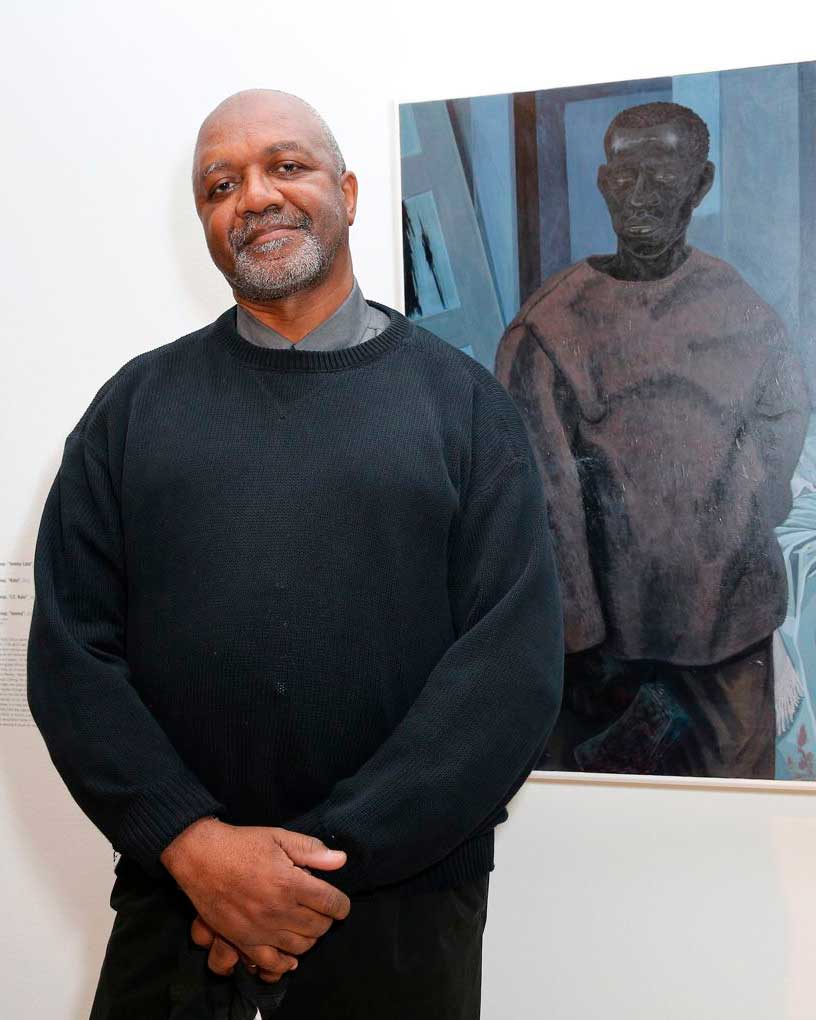
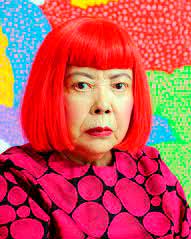
Yayoi Kusama
Yayoi Kusama is an artist who has challenged the myth that artists are all solitary and introverted. Kusama is known for her immersive installations and performances that often involve large groups of people.
Banksy
Banksy is an artist who has challenged the myth that artists need formal education or training to be successfull, Banksy is a street artist who has gained worldwide recognition for his anonymous and politically charged works.
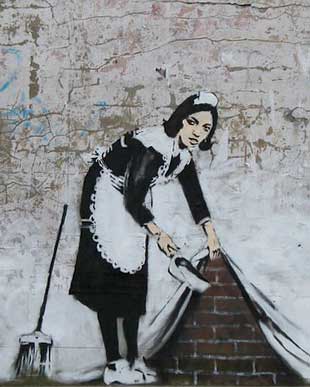
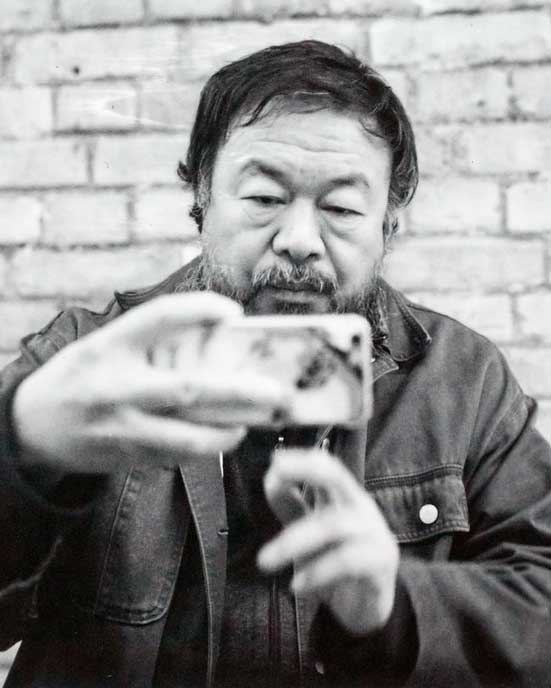
Ai Weiwei
Ai Weiwei is an artist who has challenged the myth that artists are apolitical. Weiwei is a Chinese artist and activist who has used his art to address issues such as human rights, freedom of expression, and government corruption.
Marcel Duchamp
Marcel Duchamp is often cited as an artist who debunked myths about the art world. Duchamp’s “readymades,” such as his famous piece “Fountain,” challenged the idea that art must be made by the artist’s hand and that it must be beautiful or aesthetically pleasing. Duchamp’s work paved the way for the development of conceptual art, which emphasizes the idea or concept behind the artwork rather than its physical form
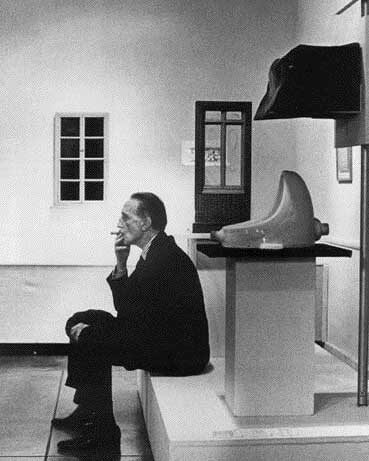
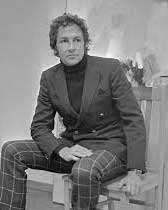
Robert Rauschenberg
Robert Rauschenberg challenged the idea that art must be made with traditional materials and techniques. Rauschenberg’s “combines” incorporated found objects and everyday materials into his artwork, blurring the line between art and life
These artists, and many others, have proven that the art world is diverse and complex, and that there is no one-size-fits-all approach to being an artist. They have shattered stereotypes and demonstrated that artists can come from any background, create in any medium, and have a wide range of personalities, experiences, and motivations.
The Harmful Impact of Artists Myths
Artists myths, perpetuated by popular culture and art history, can have a detrimental impact on real-life creators. The romanticized notion that all artists are “starving” or born with innate talent can discourage individuals from pursuing creative careers. Additionally, the stereotype that artists are eccentric and emotionally unstable can perpetuate harmful misconceptions about mental health and discourage artists from seeking help.
Moreover, these artists myths can influence the way society views the value of art. The belief that art is not a serious profession can limit funding and support for the arts, reducing opportunities for future generations of creators.
In conclusion, it’s essential to recognize the harmful impact of artist myths and dispel them. By understanding the diversity and complexity of the art world, we can better support and appreciate the work of artists.
Conclusion
In conclusion, artists are complex individuals who lead diverse and multifaceted lives. While there are certainly some common myths and misconceptions about the profession, the reality is that being an artist requires hard work, dedication, and skill. By debunking these artists myths and exploring the realities of the profession, we can gain a greater appreciation for the creativity and ingenuity of artists.

